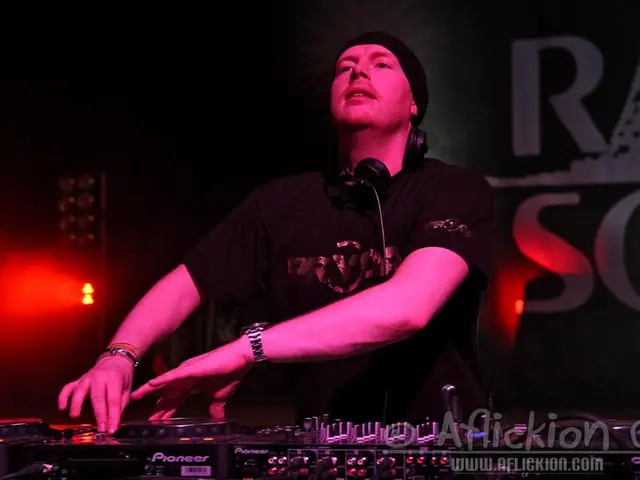Seven Artworks Revealing Insights into Depressive Experiences
Unleashed: 7 Depression Masterpieces and the History of Melancholy
Melancholy, once called "the black bile," has been a prevalent theme in art and human experience for centuries. Let's journey through time as we explore seven works that embodied the feelings of sadness, isolation, and emptiness.
1. Melancholy 1 (Albrecht Dürer)
Albrecht Dürer, in his engraving, gives a chilling representation of melancholy through a winged figure who is focused on his creation yet lost in sorrow. Raising a hand to his cheek, a gesture that signals the melancholic “Saturnian humor” of artists, this figure immersed in his thoughts might remind us of ourselves when battling creativity and limited time.
2. Abandoned Old Man (Vincent Van Gogh)
This melancholic figure, heavily falling into a chair, was created by one of history's most tormented artists, Vincent Van Gogh. The aura of despair surrounding this work is palpable, hinting at the fiery spirit grappling with mental illness that ultimately claimed his life.
3. The Lost (John Everett Millais)
Inspired by the sorrowful character of Mariana from Shakespeare's play Measure for Measure, Millais' painting depicts a woman rising from her seat, disheartened and isolated. Autumn leaves falling and earthy colors fill the space, alluding to a somber and stagnant environment devoid of hope.
4. Helpless (Frida Kahlo)
With food entering her mouth in a ghostly manner, Kahlo shows a woman disheveled and defeated, seemingly asking for help or accepting her fate. The funnel emerging from her mouth and the barren landscape behind her bed create an unsettling atmosphere of despair.
5. Reviving Hopes (Edward Hopper)
Edward Hopper excels in capturing the melancholy in everyday life. In Morning Sun, a woman seated on her bed appears lost in her thoughts, devoid of interaction and spark, with only the new day's light offering a faint glimmer of hope.
6. Emptiness (Isidre Nonell)
Catalan artist Isidre Nonell's portrait of Consuelo Gimenez Escuder embodies sorrow. The young woman, disheveled and defeated, captures the pain felt by the artist in the wake of her untimely death.
7. Despair (Caspar David Friedrich)
Friedrich's Crow Tree evokes the transience of life and the inevitable approach of death through melancholic colors and the crows flying from its leafless crown. A sense of hopelessness permeates the painting, reflecting the artist's struggles with mental health.
Art allows us to experience the depths of human emotion, helping us navigate our own sorrow by reflecting it back to us. Exploring these seven masterpieces can give us a better understanding of the complexities of melancholy and the power it holds over our spirits.
Behind the Mood: On Melancholy in Art
Contrary to modern views of melancholy, ancient Greek medicine regarded it as a diagnosable emotional disorder, causing sadness, anxiety, and fear. Plato and Aristotle believed that melancholic individuals, often associated with creative genius, lived productive and significant lives. Throughout history, however, interpretations of melancholy have continuously evolved, affecting both artistic style and subject matter.
In the late 19th century, the Symbolist art movement brought melancholy to the forefront as a deeply introspective and meaningful theme, exploring existential themes, the unconscious mind, and spirituality. Edvard Munch and Arnold Böcklin’s works are exemplary of the Symbolist movement’s approach to melancholy.
The theme of melancholy transcends cultural and historical boundaries, uniting us in our shared experiences of loss, introspection, and inner turmoil. These artistic expressions remind us that we are not alone in our struggles and, perhaps, even help heal our emotional wounds through empathy and understanding.
1. Psychology and Art: Delving into the annals of human expression, melancholy captures the hearts of artists, just as it does the souls of individuals struggling with emotional turmoil. The chilling figure in Albrecht Dürer's 'Melancholy 1' represents an artistic embodiment of melancholy, reminding us of the psychological struggles that artists and others endure when striving for creativity amidst time constraints.
2. Mental Health and Art: Melancholic themes permeate the works of history's most tormented artists, providing a window into the depths of mental illness. Vincent Van Gogh's 'Abandoned Old Man' is a poignant example, encapsulating the spirit of despair that plagued both the artist and his characters. Similarly, Frida Kahlo's 'Helpless' showcases a woman ingesting food in a ghostly manner, reflecting the artist's internal struggle while highlighting the interconnection between art, health-and-wellness, and mental health.
3. Nutrition and Art: The visual narratives of melancholic artworks also touch upon the human experience of nutrition, as demonstrated by Frida Kahlo's 'Helpless'. Although not a typical subject of art, food can play a symbolic role in emotions and the expression of struggles, as shown by the funnel emerging from the woman's mouth and creating an unsettling atmosphere in the painting. These artistic choices invite thoughtful reflection on the role of nutrition in maintaining both physical and mental health.






